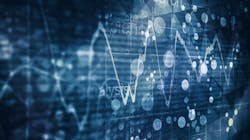What can be gained from real-time data analysis?
The process of remote monitoring involves keeping an eye on and gathering data from machinery or equipment from a distance, usually with the use of sensors and communication tools. The gathered information is examined to improve safety, reduce downtime and maximize equipment performance. In order to make educated decisions and act quickly when necessary, companies may use remote monitoring to gain real-time insights into the performance of their equipment. Manufacturing, agriculture, energy and the healthcare sectors are just a few of the industries that use this technology extensively.
The benefits of equipment remote monitoring include increased uptime and dependability, increased productivity and efficiency, cost savings, improved safety, better data management and scalability. The performance of equipment is optimized; downtime is decreased; and a safe working environment is guaranteed. As more businesses look for methods to enhance their operations, remote monitoring is becoming increasingly important.
A remote-monitoring system consists of essential components, including sensors for data collection, communication tools for data transmission, software for data analysis, data storage for safe access, a user interface for control and access and a power source for continuous operation. The specific components and their capabilities may vary based on the type of equipment being monitored and the needs of the organization. Together, these elements deliver real-time equipment-performance data that helps businesses run more efficiently and make wise decisions.
Typically, equipment being watched via remote monitoring has sensors attached. Depending on the kind of equipment, these sensors collect information on metrics like temperature, pressure and vibration. Once the data has been collected, it is sent to a central location where it is evaluated and stored using communication methods including satellite, cellular and Wi-Fi. Dashboards, alerts and reports that give real-time information on the performance of the equipment may be included in the software used for data collection and processing. In order to provide safe and flexible access, the data is frequently kept in the cloud.
Through a user interface, which might be a web-based platform or a mobile app, users can access the remote monitoring system. Users may operate the system using the interface, which shows real-time data.
Remote-monitoring systems can be powered by a battery or an external power supply. The power supply guarantees that the system runs continually, allowing ongoing equipment monitoring. In conclusion, remote monitoring gathers data from equipment using sensors, sends the data to a central location, processes the data using software, stores the data in the cloud and makes the data accessible via a user interface.
Remote-monitoring systems offer a way to track equipment performance and gather valuable data. Remote monitoring can increase production and efficiency by detecting problems quickly, reducing downtime and providing real-time data and insights on equipment performance.
Industrial machinery, transportation equipment, medical equipment, agricultural equipment, building systems, power-generation and -distribution equipment and IT equipment are just a few examples of the sorts of equipment that may be monitored remotely.
For instance, if an industrial machine begins to exhibit symptoms of failure, a remote-monitoring system may promptly notify operators and maintenance staff, enabling them to take appropriate action before the problem results in a total breakdown and prolonged downtime.
Additionally, remote monitoring may help businesses to optimize operations, lower energy use and boost general productivity and efficiency by giving them comprehensive data on equipment usage and performance. In general, remote monitoring may be a vital tool for improving how successfully, sustainably and efficiently businesses run.
When selecting a remote monitoring system, consider the following: the type of equipment, data needs, cost, scalability, interaction with other systems, a user-friendly interface, dependability and security. A good system may save expenses, expedite data handling and improve data management and increase the effectiveness and dependability of the equipment.
About the Author
Shawn Cox
Contributing Editor
Shawn Cox is a licensed master electrician/PLC programmer. He was co-owner/operator of Bobby Cox Electric for 15 years and is currently employed by BMW Manufacturing as an ESA. Contact him at [email protected].

Leaders relevant to this article:

